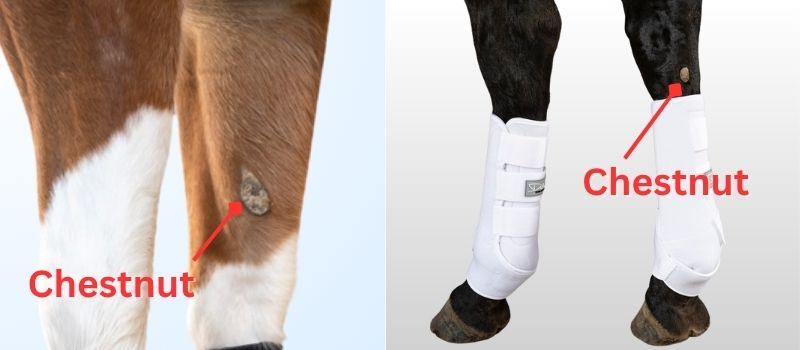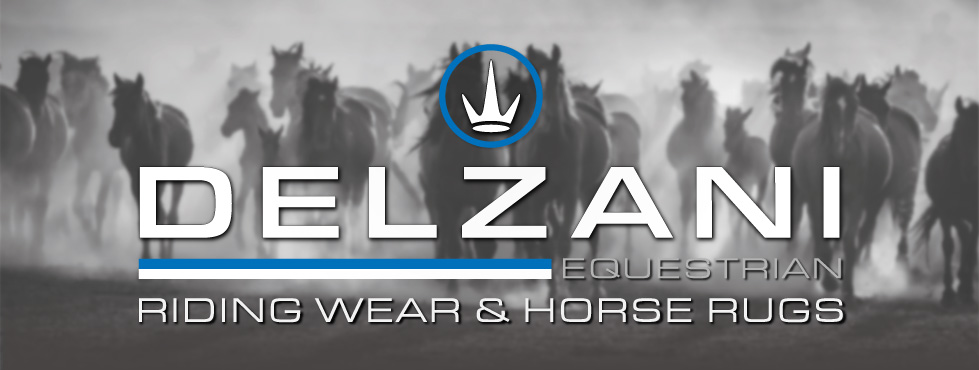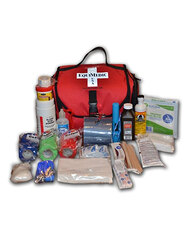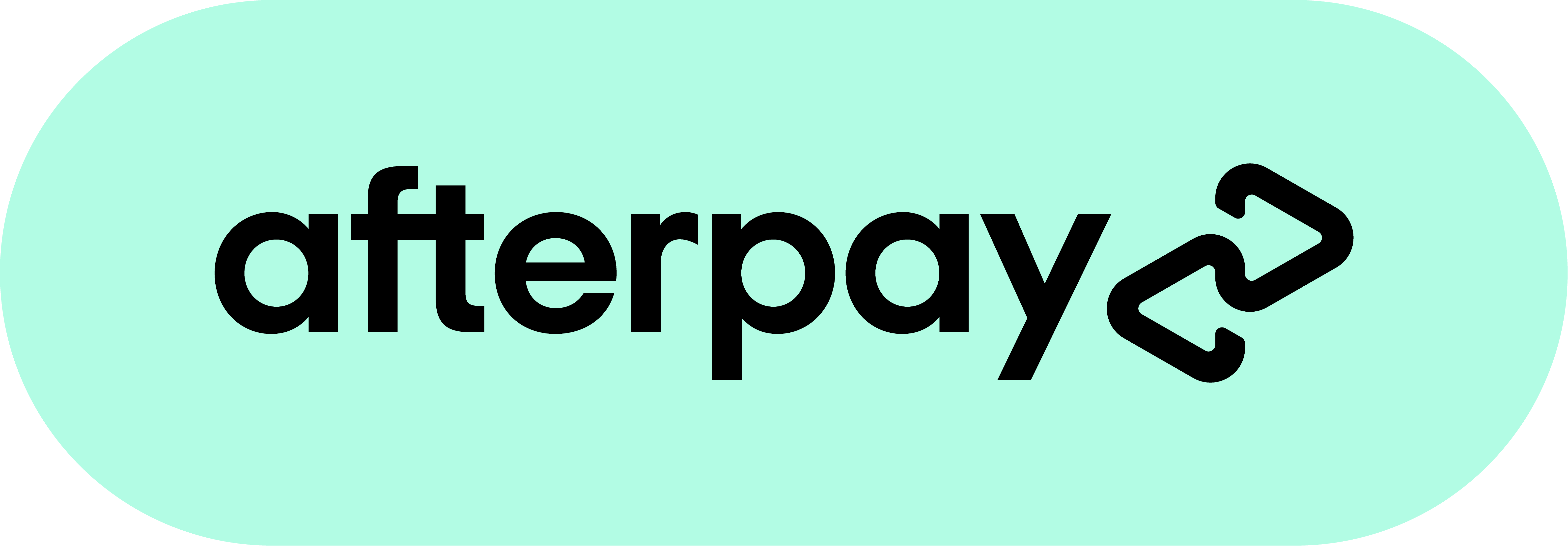What Are Chestnuts and Ergots on Horses? Understanding These Unique Growths

Horse Chestnuts and Ergots Explained: Identifying, Understanding and Caring for These Natural Growths
Updated September 2025
A practical guide for Australian horse owners on what chestnuts and ergots are, why horses have them, and how to safely care for these natural calloused features as part of everyday grooming and horse management.
If you’ve ever noticed a hard, calloused patch on the inside of your horse’s leg and wondered what it is, you’re not alone. Those small, rough growths are called chestnuts and ergots, and while they might seem odd, they’re a perfectly natural part of equine anatomy. Once thought to be leftovers from evolution, these features are unique to each horse, almost like fingerprints.
What Are Chestnuts?
Chestnuts are firm, keratin-based growths found on the inside of the front legs (above the knee) and below the hock on the hind legs. They’re made of the same protein that forms a horse’s hooves and mane. Some are smooth and flat; others grow thick and flaky over time. Either way, they’re completely harmless.
In fact, every horse’s chestnuts are unique in shape, size, and texture. For this reason, they’re sometimes called a horse’s “fingerprints.” Old-timers even used them for identification long before microchipping was a thing.

What Are Ergots?
Ergots are smaller, pea-sized calloused growths found on the back underside of the fetlock (the horse’s “ankle”). Like chestnuts, they’re made of keratin and can vary widely between breeds and individuals. Draft and feathered breeds often have more visible ergots, while fine-coated horses may have almost none.
They’re believed to serve as a vestigial remnant, a leftover from a time when horses had multiple toes. Fossil records show early ancestors, such as Eohippus (or “dawn horse”), had four toes on the front legs and three on the hind legs. Over millions of years, these digits fused and refined into the single, strong hoof we see today. The ergot and chestnut are thought to be the last traces of those ancient toes.
Why Do Horses Have Chestnuts and Ergots?
Scientists and horsemen have debated this for centuries. The leading theory is that chestnuts and ergots are evolutionary remnants, the remains of extra toes from when early horses roamed prehistoric forests. Another theory suggests chestnuts once acted as scent glands, used for social interaction or marking territory.
Whatever their origin, both structures are now harmless and serve no essential modern function. Some horses even use their chestnuts for scratching their faces or rubbing against fences, a small but practical use nature might not have intended.
Do All Horses Have Them?
Most horses have chestnuts on all four legs and ergots on each fetlock, but not always. Certain breeds, like Arabians and donkeys, often have only front chestnuts or very small ergots. This variation is completely normal and not linked to health or soundness.
How to Care for Chestnuts and Ergots
Both features grow slowly throughout a horse’s life. Like hooves, they can become thick and rough, especially if your horse lives in a dry climate. Routine grooming helps keep them tidy:
- Softly peel or trim excess chestnut if it becomes flaky or overgrown. Use your fingers after bathing when the area is soft, or apply a little baby oil to loosen it.
- Never cut deeply chestnuts and ergots are sensitive near the skin, and over-trimming can cause pain or bleeding.
- Farriers often tidy them up during regular hoof care using a hoof knife if necessary.
- Grooming tip: keeping chestnuts neat gives the legs a clean, well-finished look ideal for lessons, shows, and general presentation.
For gentle, effective grooming around sensitive areas, explore our Horse Grooming Brushes & Combs featuring premium HAAS brushes designed for Australian horses and conditions.
Interesting Facts About Chestnuts and Ergots
- Chestnuts and ergots are made of keratin, the same substance as human nails and hair.
- No two horses have identical chestnuts; they’re sometimes used for identification like fingerprints.
- Some horses nibble their own chestnuts as a self-grooming habit.
- Old cowboy lore says carrying a horse’s peeled chestnut makes other horses friendlier thanks to its natural scent.
Common Myths and Misconceptions
- “They’re warts or skin growths.” False. They’re natural anatomical features, not diseases or blemishes.
- “They need to be removed.” False. Chestnuts and ergots should never be cut out or aggressively trimmed.
- “All horses have four chestnuts.” Not quite. Most horses have two on the front legs and may have smaller ones behind, but some, like Arabians or donkeys, often have only the front pair. It’s completely normal either way.
Final Thoughts
Chestnuts and ergots are fascinating remnants of equine evolution, small, harmless features that connect today’s horses to their ancient ancestors. Understanding what they are (and what they’re not) helps riders and owners care for their horses with confidence and curiosity.
Whether you’re brushing up on your grooming routine or just love learning about the quirks that make horses unique, these little callouses remind us how incredible equine design truly is, proof that every horse carries a story millions of years in the making.
For gentle, effective care, explore our full range of horse grooming brushes and combs from soft face brushes to durable body brushes designed for Australian conditions.
Want to go deeper? Read our HAAS Ultimate Grooming Guide for expert tips on coat care and brush selection.
Written by Jane Griffiths - An experienced Australian horse owner and product developer with over three decades immersed in equestrian life. Jane has spent years refining horse rugs, tack, and riding apparel to better suit Australian climates. She has enjoyed countless weekends at gymkhanas, show jumping events, and pony club competitions with her daughter, and still loves hitting the trails with friends whenever she can. Her lifelong passion for horses and hands-on understanding of equine comfort continue to shape her practical, rider-first approach to horse care and product design.
Related Equestrian Guides
HAAS Ultimate Horse Brush Grooming Guide
Build a smarter grooming kit with HAAS brushes. Explore the soft, medium and stiff bristle designs trusted worldwide for comfort, durability and glossy coats.
Essential Horse First Aid Supplies
Looking for reliable and effective horse first aid supplies? We offer a wide range of essential items to help keep your horse healthy and happy, including wound care, bandages, poultices, and more. Trust Delzani for all your horse first aid needs.
Best Horse Grooming Brushes & Combs in Australia
An Australian guide to horse grooming brushes and combs, covering brush types, benefits, routines, seasonal care, and Delzani’s HAAS collection for healthy, shiny coats.
Horse Cooling Guide: Preventing Overheating and Heat Stress After Exercise
Hot Aussie summers put horses at real risk of heat stress. Learn how to prevent overheating, cool your horse safely after exercise, and spot early warning signs. With smart care and the right gear, you can keep your horse comfortable, safe, and thriving.
Types of Horse Brushes & Their Uses | Best Horse Grooming Brushes in Australia
A complete Australian rider’s guide to horse grooming brushes what they are, types of brushes, their uses, and how to build the best grooming kit for your horse.
Horse Grooming - Brushes & Combs
Premium horse grooming brushes and combs designed for Australian riders from daily dust removal to show-ring shine, keep your horse comfortable, healthy, and looking their best.












